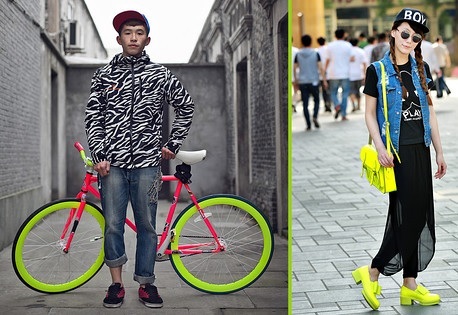
July 23, 2014, by Tony Hong
文艺青年 – China’s Emerging Hipsters
By Aimee Strang,
Student at Nottingham University Ningbo Summer School.
Wenyi Qingnian – aka the Chinese expression used to describe a hipster. The term hipster has become increasingly popular over the past decade to describe those who belong to a certain subculture and are predominantly from Generation Y. The idea of hipster has primarily been associated with Western culture, however, it is a subculture that is growing in popularity in the East. As China continues to develop both economically and socially, there is more and more interest being cast upon today’s Chinese youth, particularly those belonging to a subculture associated with liberal values. China’s youth is an important segment of the population who have great influence over future economic and social development, therefore, a large amount of attention is paid to their activities and interests.
Those coined a hipster in the West are generally associated with political activism and ideas associated with modernization. However, China is a very different story. Whilst the Wenyi Qingnian partake in the social aspects of the hipster culture, i.e. the non-mainstream fashion sense and alternative music, it is important to note political activism is not a key feature for being dubbed a hipster in China. Many popular Western writers on Chinese youth culture have stated that the Western media tends to portray Chinese youth as ‘different’ and as discontented youths that are unwillingly disengaged from politics. However, whilst the Wenyi Qingnian face similar frustrations to the rest of the world’s youth, a great deal have claimed to be content with their current situation and feel no reason to rebel against society.
One thing that is interestingly unique about the Chinese hipster is their sphere of influence. Many claim that China’s youth are on their way to becoming American or Japanese hipsters, however, this could not be further from the truth. Having grown up without siblings and with parents who lived in an extraordinarily different system, they have to embrace a new and never done before path towards to the future. Whilst some aspects of the subculture appear to be heavily influenced by the West, particularly the clothing, it is interesting to see that the youths of China are enthusiastic about creating their own Western style. Many of the clothes seen to be worn by the Wenyi Qingnian would not be considered ‘hipster’ as per say in the West.
One of the great problems associated with writing about the emerging Wenyi Qingnian is the tendency to group all of China’s youth into a single group with one specific identity. The fact of the matter is, China’s youth could not possibly have any more variety than it already does. Factors ranging from region to class to generation all impact upon the enormous variety we can see amongst the youth of China. Those who live in Shanghai are exposed to countless hipster haunts, ranging from tiny longtangs (Shanghainese alleyways) that cater for the bohemian shopper to quaint art galleries. However, the hipster sphere somewhat differs from city to city and those living in Harbin would experience a very different hipster culture from those living in Shanghai.
There is a lot to say for the Chinese hipster. The hipster subculture has taken China by a storm just like it has in a great deal of societies across the globe. Although aspects of clothing and pop culture may have similar features to Western culture, the youth of China is very unique. Whilst it can be argued that the youth in China is excessively materialistic, it has been noted that there is a level of care for their parents that the youths in the West could learn from. The Wenyi Qingnian should definitely be applauded for the difficult balancing they must sustain. The balancing act of simultaneously balancing the ability to rebel and conform in the fastest developing nation the world has ever seen.
No comments yet, fill out a comment to be the first

Leave a Reply